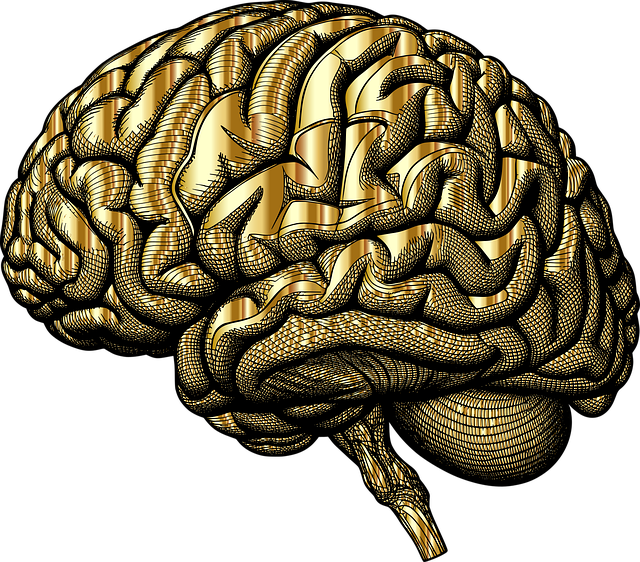Psychoanalysis and psychodynamic therapy, pioneered by Sigmund Freud, are powerful therapeutic approaches focusing on the unconscious mind as a root cause of psychological distress. These methods explore early life experiences, relationships, and internal conflicts to uncover repressed memories and emotions, fostering self-awareness and resolving inner conflicts. Through techniques like free association and dream interpretation, these therapies enable individuals to develop healthier coping strategies, gain insights into their behaviors and emotions, and ultimately improve mental well-being. Backed by numerous case studies, these approaches have proven effective in addressing complex emotional issues and promoting lasting positive changes in clients' lives.
“Unraveling the depths of the human mind, psychoanalysis and psychodynamic therapy emerge as powerful tools in the realm of mental health psychotherapy. This article offers an insightful exploration of these therapeutic approaches. From understanding the unconscious through psychoanalysis to delving into the connection between past and present in psychodynamic therapy, we dissect core principles, techniques, and real-world applications. Discover the benefits, challenges, and why these methods are transforming mental health treatments.”
Understanding Psychoanalysis: A Deep Dive into Unconscious Minds

Psychoanalysis, a pioneering approach in mental health psychotherapy, delves into the depths of the human mind, particularly the unconscious. This therapeutic method, developed by Sigmund Freud, aims to bring the hidden aspects of our psyche to light, believing that these subconscious elements significantly influence our thoughts, behaviors, and emotions.
Through various techniques, such as free association, dream interpretation, and transference analysis, psychoanalysts help patients explore their inner worlds. The process involves uncovering repressed memories, desires, and conflicts, which are considered the root causes of psychological distress. By gaining insight into these unconscious processes, individuals can foster self-awareness, resolve internal conflicts, and achieve a deeper understanding of themselves, ultimately leading to improved mental well-being.
Psychodynamic Therapy: Exploring the Connection Between Past and Present

Psychodynamic therapy is a form of psychotherapy that emphasizes the influence of unconscious thoughts and past experiences on current behavior and emotions. This therapeutic approach explores the connection between our mental health and our psychological history, delving into early life events, relationships, and internal conflicts to gain insights into present-day challenges. By uncovering repressed memories, desires, and fears, psychodynamic therapy helps individuals understand the underlying causes of their distress and develop healthier coping mechanisms.
This type of therapy is particularly effective for those struggling with complex emotions, recurring patterns in relationships, or long-term mental health issues. It encourages self-reflection and introspection, fostering a deeper awareness of one’s thoughts and feelings. Through this process, individuals can achieve greater clarity, resolve inner conflicts, and make meaningful changes to improve their overall well-being and psychotherapy outcomes.
The Core Principles of Psychoanalytic Theory

Psychoanalysis, pioneered by Sigmund Freud, is a foundational approach in psychodynamic therapy that emphasizes the influence of the unconscious mind on behavior and mental health. Central to this theory are the concepts of instinctual drives, the psychological development stages, and the dynamic interplay between the id, ego, and superego. These internal elements shape our experiences, motivations, and interactions with the world.
The core principles of psychoanalytic theory postulate that early childhood experiences and unconscious conflicts significantly impact an individual’s psyche and well-being. By exploring these unspoken conflicts and desires, psychodynamic therapy aims to bring them into conscious awareness, facilitating understanding and resolution. This process enables individuals to gain insight into their behaviors, emotions, and relationships, ultimately leading to personal growth and improved mental health psychotherapy outcomes.
Techniques and Methods in Psychodynamic Practice

Psychodynamic practice relies on a range of techniques and methods to explore and understand an individual’s unconscious mind, beliefs, and past experiences. Central to this approach is the therapeutic relationship, where the therapist fosters a safe and non-judgmental space for patients to freely express their thoughts and emotions. Free association, a key technique, encourages patients to speak whatever comes to mind, allowing for the emergence of repressed or hidden material. Therapists may also use interpretation to help patients understand the significance of their dreams, slips of the tongue, and other seemingly insignificant behaviors.
Another important method is transference analysis, where patients project feelings and expectations from past relationships onto the therapist. By exploring these projections, therapists can help individuals gain insight into their underlying emotional patterns and conflicts. In psychodynamic therapy, mental health psychotherapy goes beyond surface-level issues, delving deep into the psyche to uncover and resolve long-standing conflicts that may be contributing to current psychological distress.
Benefits and Challenges: Why Choose Psychoanalysis or Psychodynamic Therapy?

Psychoanalysis and psychodynamic therapy offer unique benefits in the realm of mental health psychotherapy. One of their key strengths is the focus on unconscious processes, providing a deeper understanding of underlying issues that may not be readily apparent. By exploring early experiences, relationships, and defenses, these therapeutic approaches help individuals gain insights into their emotional patterns and behaviors, fostering self-awareness and personal growth. This process can lead to significant improvements in overall mental well-being and relationship dynamics.
However, these therapies also present challenges. They often require a significant time commitment, with lengthy sessions that can span several months or even years. Additionally, the exploration of traumatic or distressing memories may evoke strong emotions, potentially leading to temporary discomfort or relive of past experiences. Despite these challenges, many individuals find psychoanalysis and psychodynamic therapy invaluable in addressing complex emotional issues, resolving conflicts, and achieving lasting positive changes in their lives and relationships.
Real-World Applications: Case Studies and Their Impact on Mental Health

Psychoanalysis and psychodynamic therapy have proven effective in various real-world applications, as demonstrated through numerous case studies. These narratives offer valuable insights into the profound impact such therapies can have on mental health. By exploring individuals’ past experiences, unconscious motivations, and internal conflicts, these approaches help clients gain a deeper understanding of themselves.
Case studies often reveal how early life events and interpersonal relationships shape one’s current emotional state and behaviors. Through talk therapy, patients can confront and resolve unresolved issues from their past, leading to significant improvements in their mental well-being. This process enables individuals to develop healthier coping mechanisms, enhance self-awareness, and foster better relationships, ultimately promoting lasting positive changes in their lives.
